On View
What Was Dorothea Tanning Trying to Tell Us With Her Art? The Curator of Her New Show Explains the Surrealist’s Intimate Symbology
Here are five major works from the show, with a primer on what they mean to say.
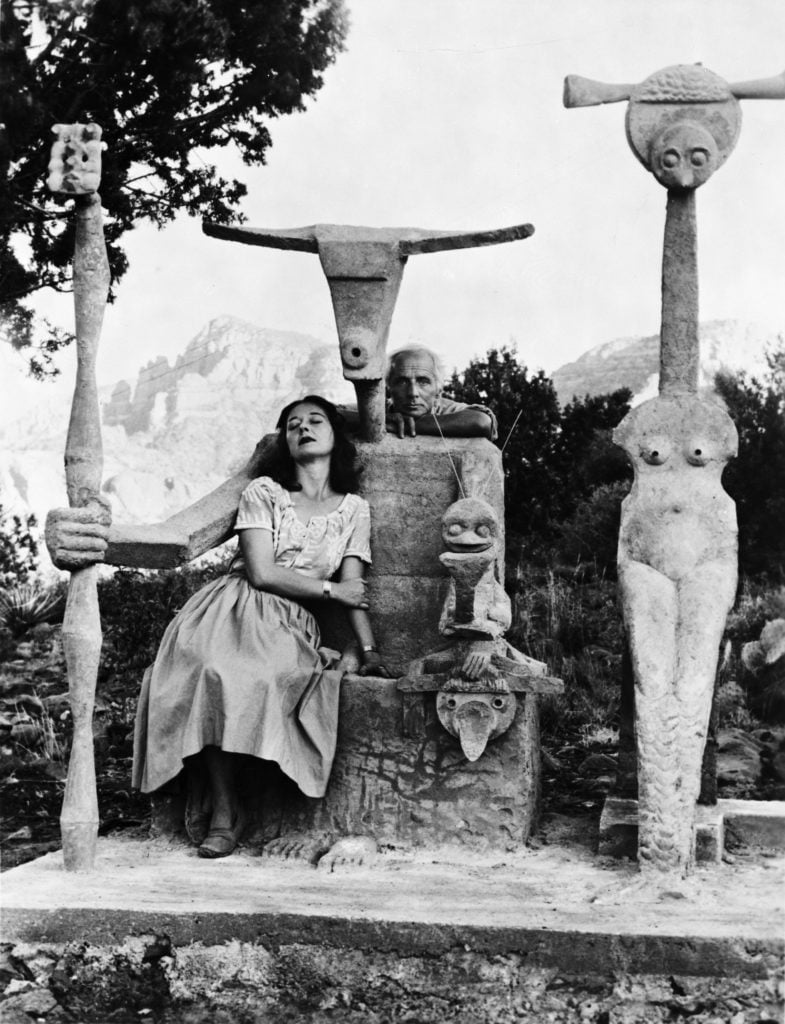
Here are five major works from the show, with a primer on what they mean to say.

Javier Pes

Dorothea Tanning, the Surrealist artist who made it from the small town of Galesburg, Illinois, to the center of New York’s avant-garde art world, lived until she was 101, but she never got the major museum survey she deserved in her lifetime. A show of around 100 works at Tate Modern in London spanning her 70-year career is putting that right.
Wallpaper, chess pieces, fabric, and especially doors, always slightly ajar, feature in her uncanny paintings and sculptures. Often, there’s a sense of the Midwest from which she escaped lingering in the shadows. She famously quipped of her Illinois home town that “nothing happened but the wallpaper.”
Among the many surprises in the exhibition, co-organized with Madrid’s Reina Sofía, is the deeply creepy installation Chambre 202, Hôtel du Pavot (1970–73), a nightmarish room that the Tate show’s co-curator, Alyce Mahon, an expert on the female Surrealists and a University of Cambridge academic, compares to Duchamp’s late, great installation Étant Donnés.
But it’s not the only work in the show full of rich symbolism. We asked Mahon (who co-curated the exhibition with Ann Coxon, the Tate’s curator of international art) to unpack the motifs that make Tanning’s classic paintings, soft sculptures, and late masterpiece so compelling and uncanny.

Dorothea Tanning, Birthday (1942). © DACS, 2019.
“We often read the dress as a typical of [the artist] self-fashioning herself, like Frida Kahlo or Leonora Carrington,” Mahon says. “But in Tanning’s memoirs she refers specifically to going to thrift stores and picking up dresses for $5 to modify them and turn up looking exquisite at a party. She refers to this dress as a ‘Shakespearean costume.’ The skirt looks like branches or tendrils, but if you look closer there are swarming bodies, breasts, and buttocks. The ripped-open bodice is a triumphal image of the female warrior. It is a self portrait but it is also about a woman having powers she can activate and energize.”
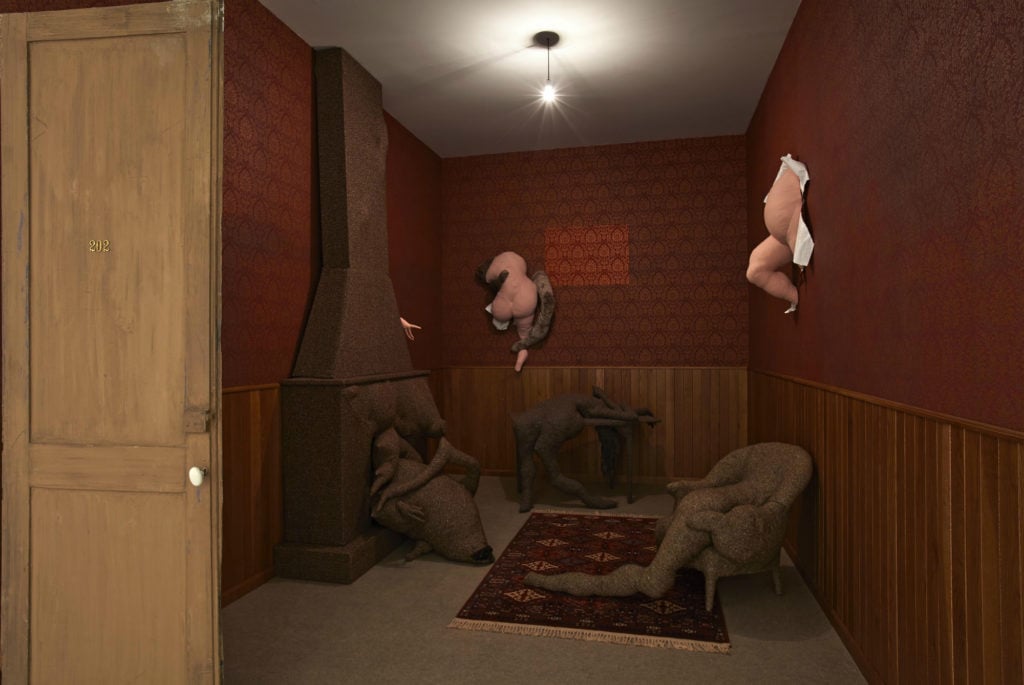
Dorothea Tanning, Hôtel du Pavot, Chambre 202 (1970–73). Photo © Centre Pompidou, MNAM-CCI, Dist. RMN-Grand Palais/Philippe Migeat. © DACS, 2019.
“The door—it’s never open or closed, it’s ajar—is a very Surrealist motif,” Mahon says. “You want to know what’s behind it, but of course that’s never going to be revealed. When she started portraying wallpaper in her paintings, Tanning was playing with the idea of breaking through the domestic space, the nursery space, the well-organized location that we associate with femininity. Tanning wreaks havoc on it. It becomes a symbol of sexual liberation and imaginary games all coming together.”
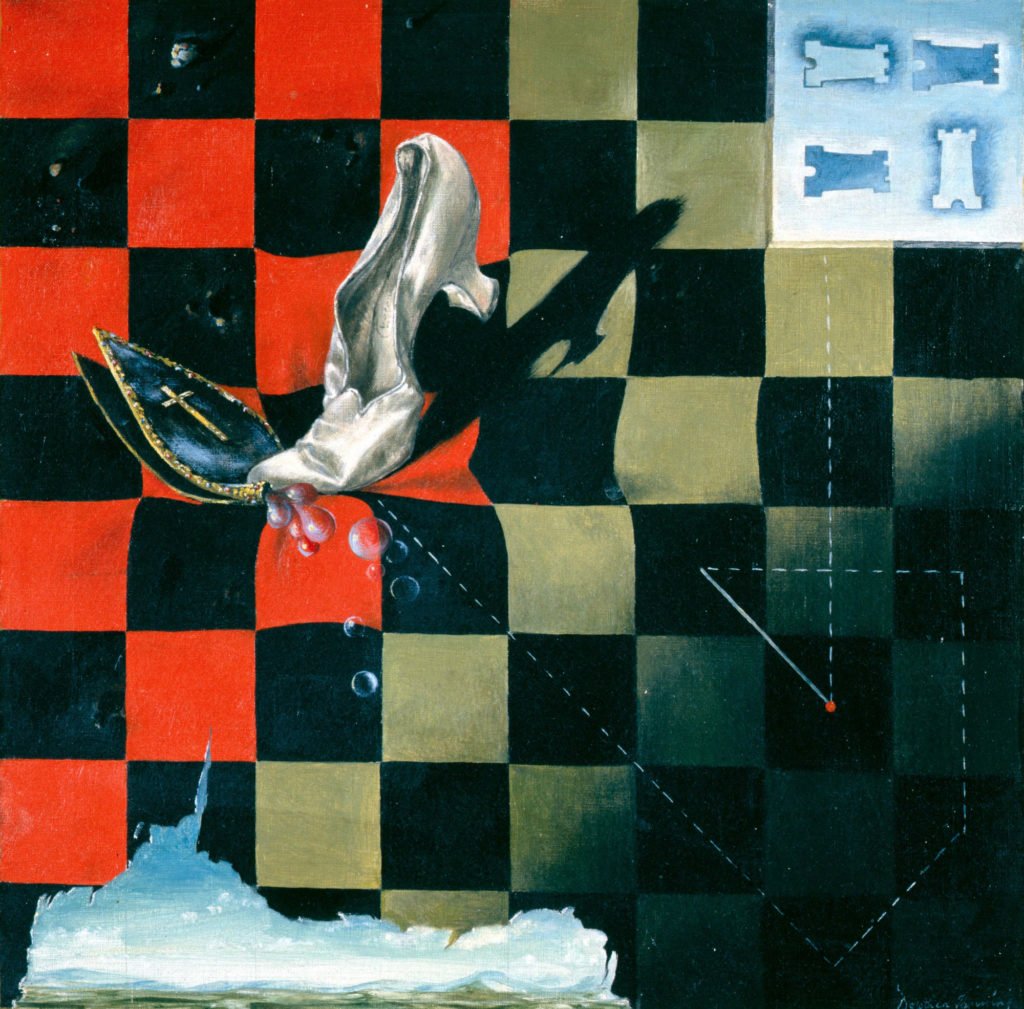
Dorothea Tanning, Endgame (1944). © DACS, 2019.
“We always associate chess with Duchamp, but chess brought Tanning and [her husband Max] Ernst together,” Mahon says. “We think of chess as something quite strategic, but she described it as something quite intimate and ‘close to the bone.’ I think that’s lovely, if you think of two lovers passing pawns between each other.”
“The Queen is represented by the white satin slipper that is literally stomping out the Bishop. The Queen dominates—not the King. She painted this when she was securing a divorce, just as Ernst was divorcing Peggy Guggenheim. It is nice Surrealist trope, because they’re against the traditional family. And you have a trompe l’oeil detail in the corner, as if the chessboard has been ripped open and you have a landscape where the Queens is going to run away to. [Tanning and Ernst] were spending summers in Arizona until they could marry and cohabit. As bohemian as they were, cohabiting [before marriage] was still frowned upon.”
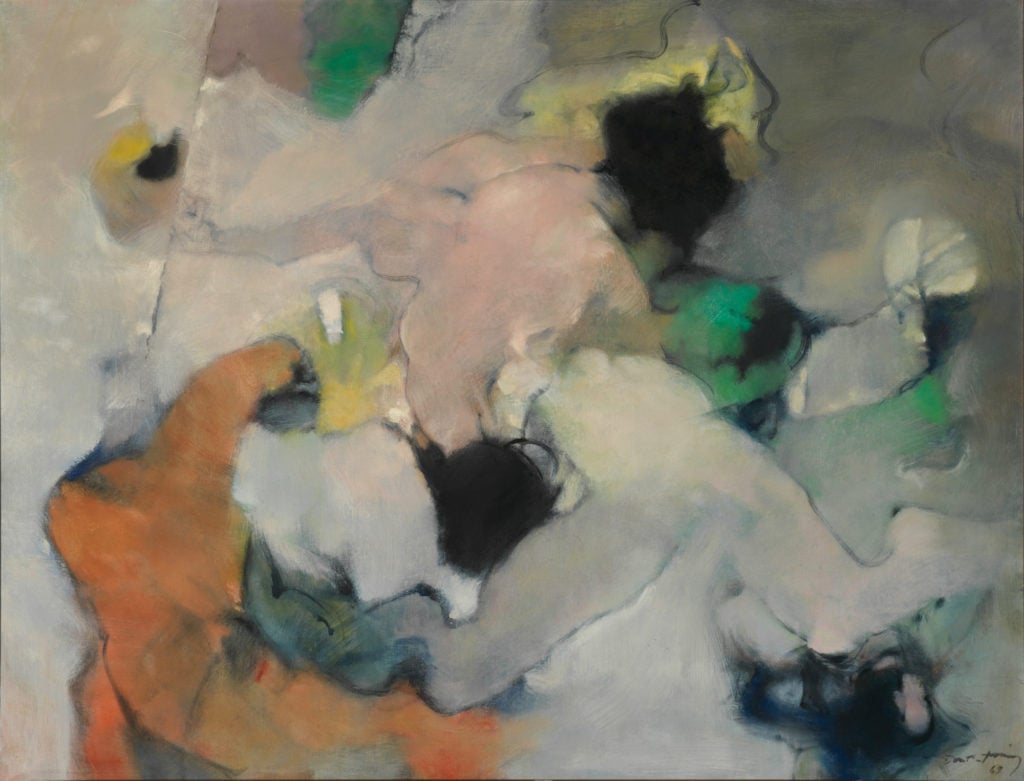
Dorothea Tanning, Inutile (Useless) (1969). The Destina Foundation, New York © DACS, 2019.
“This [comes from] a moment in Surrealist history that has not been adequately studied,” Mahon says. “It’s moving to something more abstract and fragmented—Tanning refers to [these works] as ‘kaleidoscopic’—and that idea of multiple perspectives is perhaps a nice metaphor of what Surrealism is trying to do. She starts making them as she is leaving Arizona and planning to move to Paris with Ernst. She has this big moment where she says that all the images are starting to splinter. There are similar motifs of the body, of little girls, and dogs, but it is more and more animated. It pushes her painting in a new direction. But then she drops it and starts doing sculptures.”
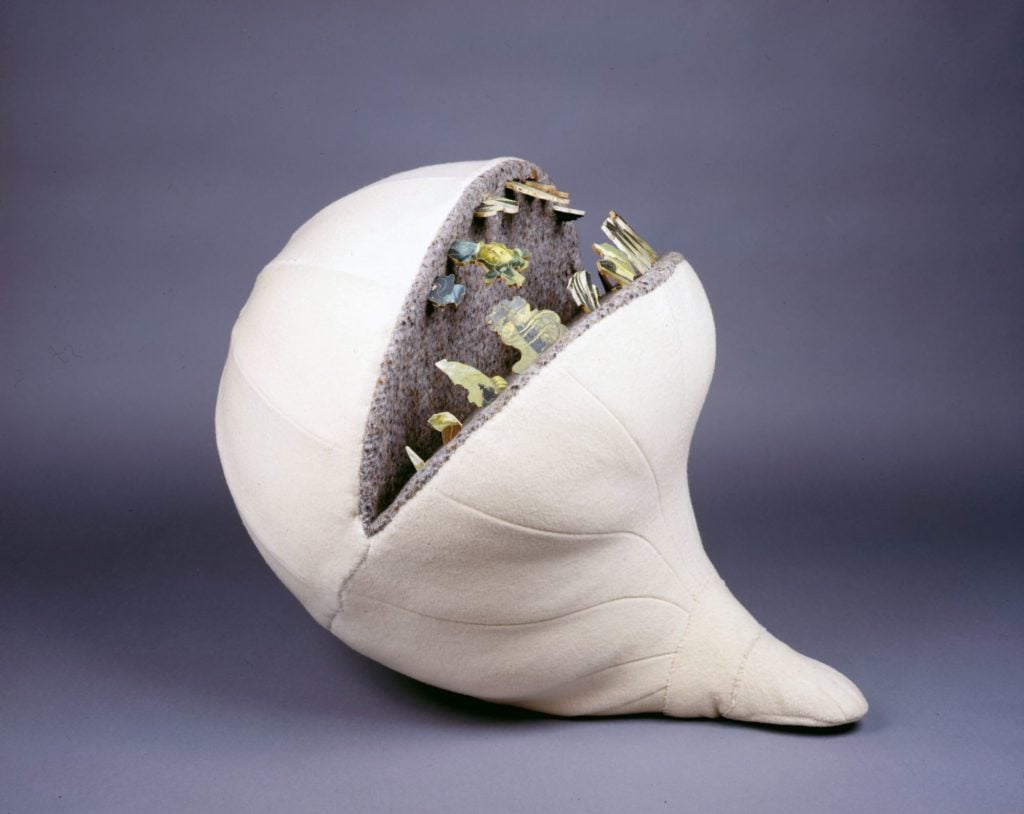
Dorothea Tanning, Verbe (1966–70). Yale University Art Gallery, Janet and Simeon Braguin Fund © DACS, 2019.
“If I asked for two words that you associate with pin cushions, you would say sewing and craft, and you would associate those with the female in the house,” Mahon says. “Tanning played with the idea of wifely skills and took a very humble object and turned it into a fetish. She crafted her first one out of velvet in 1965 and randomly placed pins in it and aligned it with a voodoo doll. She says it ‘bristles’ with images. So she takes something fabulously familiar and makes it uncanny and strange to encourage us to think differently.”
“Dorothea Tanning” will be on view at Tate Modern, Bankside, London February 27–June 9, 2019.